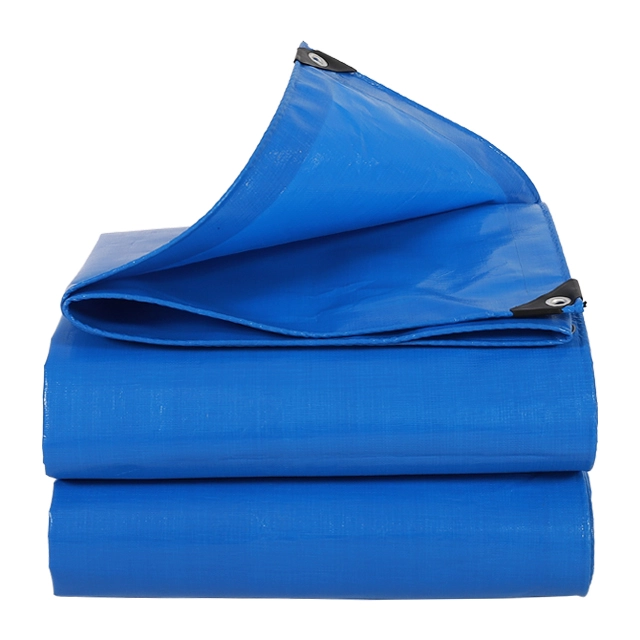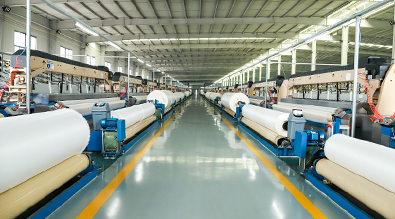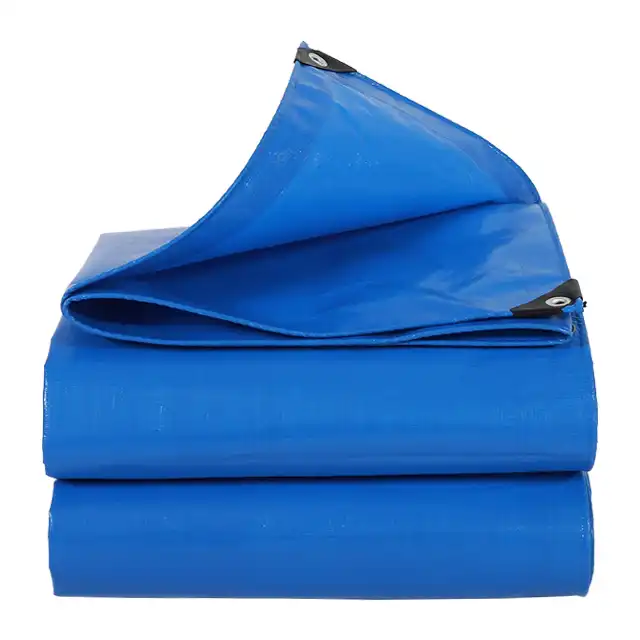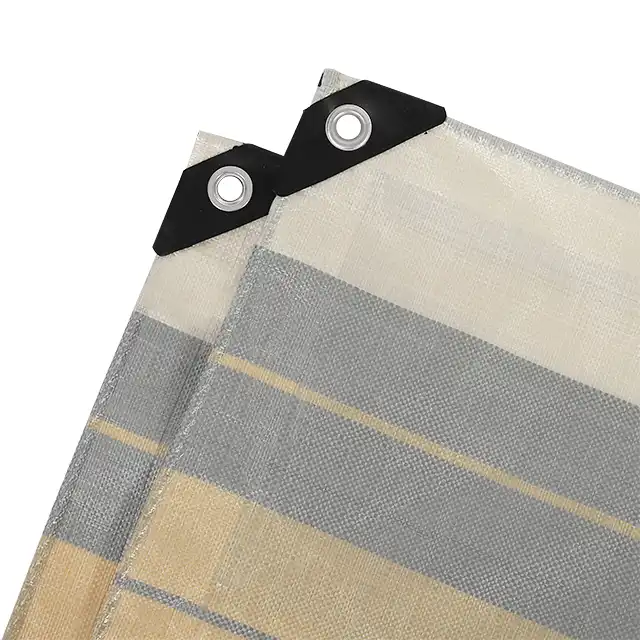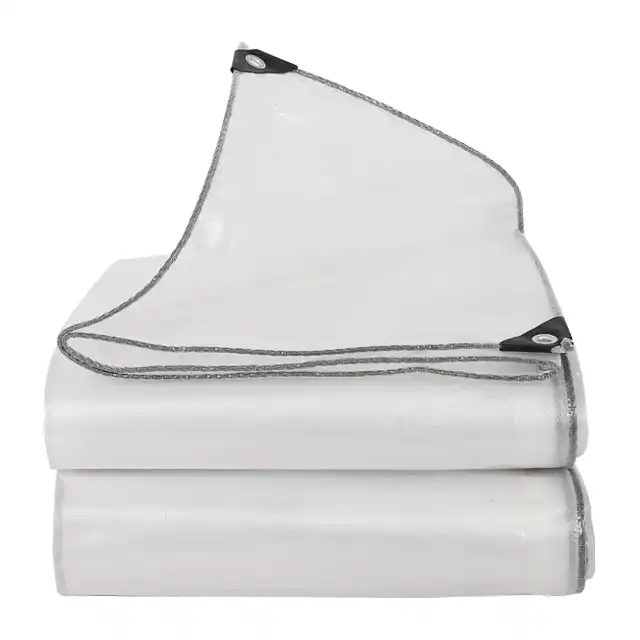5 Signs It’s Time to Replace Your Old Roof Tarp
Roof tarps serve as crucial temporary protection for your property, but knowing when to replace them can prevent costly damage and ensure continued safety. Whether you're dealing with storm damage or ongoing maintenance, recognizing the warning signs of a deteriorating PE tarpaulin is essential for maintaining effective protection. Professional-grade polyethylene tarps are designed to withstand harsh conditions, but even the most durable materials have their limits. Understanding these five key indicators will help you make informed decisions about when your roof protection needs an upgrade, ensuring your property remains secure against the elements while you plan for permanent repairs.
Visible Tears, Holes, and Physical Damage

The most obvious sign that your roof tarp needs replacement is visible physical damage. Large rips, punctures, or holes in your PE tarpaulin immediately compromise its protective capabilities, allowing water, debris, and moisture to penetrate through to your roof structure. Even small tears can rapidly expand under wind stress and weather exposure, transforming minor issues into major problems within days. High-quality PE tarpaulin manufactured with tightly woven polyethylene fibers typically demonstrates excellent tear resistance, but prolonged exposure to ultraviolet radiation, temperature fluctuations, and mechanical stress eventually weakens the material structure. Professional-grade tarps feature reinforced edges and heavy-duty construction that extends their lifespan significantly compared to standard consumer options. However, even premium materials will show signs of wear when subjected to extreme conditions over extended periods. When inspecting your tarp for damage, pay particular attention to stress points around anchor locations, corner reinforcements, and areas where the material contacts sharp edges or rough surfaces. Wind-driven debris can cause punctures, while repeated flexing motion creates microscopic cracks that eventually develop into visible tears. Quality PE tarpaulin products incorporate UV-resistant additives and multi-layer construction to minimize degradation, but these protective features have finite effectiveness against continuous environmental assault. The thickness and weight specifications of your tarp directly influence its durability and resistance to physical damage. Heavy-duty options ranging from 100gsm to 280gsm provide superior protection compared to lightweight alternatives, making them ideal choices for extended roof coverage applications. Advanced manufacturing processes that combine HDPE woven fabric with LDPE coating create robust composite materials capable of withstanding demanding conditions while maintaining flexibility and weather resistance.
Water Leakage and Compromised Waterproofing
When your roof tarp begins allowing water penetration, immediate replacement becomes critical to prevent structural damage and mold growth. Compromised waterproofing typically manifests as dripping during rainfall, water stains on interior surfaces, or visible moisture accumulation beneath the tarp material. These symptoms indicate that the protective barrier has failed and can no longer perform its primary function effectively. Professional PE tarpaulin products feature 100% waterproof construction through advanced lamination techniques that bond protective coatings to woven polyethylene substrates. This multi-layer approach creates an impermeable barrier that prevents water infiltration while maintaining material flexibility and durability. However, continuous exposure to freeze-thaw cycles, chemical pollutants, and mechanical stress can gradually degrade these protective coatings, leading to microscopic pore formation and eventual water penetration. The waterproofing integrity of your tarp depends heavily on proper installation and maintenance practices. Inadequate overlap at seams, insufficient anchor point sealing, and improper drainage design can create water entry points even in otherwise sound materials. Quality installation requires maintaining minimum four-foot overlaps at all joints, proper slope orientation for water runoff, and secure fastening that prevents wind uplift without creating stress concentrations that compromise material integrity. Advanced PE tarpaulin manufacturing incorporates specialized additives and coating formulations that enhance long-term waterproof performance. These improvements include chemical-resistant polymers, anti-aging compounds, and flexible plasticizers that maintain protective properties under varying temperature conditions. Regular inspection and prompt replacement when waterproofing fails ensures continued protection while minimizing the risk of secondary damage from water infiltration.
Excessive Sagging and Loss of Structural Integrity
Significant sagging in your roof tarp indicates material fatigue and structural compromise that requires immediate attention. While slight deflection under normal conditions is expected, excessive sagging creates water pooling areas that accelerate deterioration and increase the likelihood of catastrophic failure during storms or heavy precipitation events. This condition typically develops gradually as the material loses tensile strength and elastic recovery properties. Quality PE tarpaulin maintains its structural integrity through careful balance of material thickness, weave density, and polymer composition. Professional-grade options feature high-strength yarn construction with mesh counts ranging from 10x10 to 14x14, providing excellent dimensional stability and load distribution characteristics. However, prolonged exposure to environmental stresses gradually reduces these properties, leading to permanent deformation and reduced load-bearing capacity. The development of excessive sagging often indicates that your tarp has reached the end of its effective service life, regardless of its apparent visual condition. Materials that have lost their structural integrity cannot provide reliable protection and may fail suddenly during severe weather events. This risk makes prompt replacement essential for maintaining adequate roof protection and preventing potential injury from falling debris or collapsed sections. Proper tarp selection and installation techniques significantly influence structural performance and longevity. Heavy-duty options with reinforced edges and corner grommets distribute loads more effectively, while appropriate tensioning and support systems prevent excessive stress concentration. Professional installation ensures optimal performance by maintaining proper geometry and load distribution throughout the coverage area.
Deteriorating Edge Reinforcement and Anchor Points
The condition of edge reinforcements and anchor points provides critical insights into overall tarp integrity and remaining service life. These high-stress areas typically show the first signs of failure, making them excellent indicators for replacement timing. Frayed edges, torn grommets, or compromised reinforcement strips signal that the tarp can no longer maintain secure attachment to your roof structure. Professional-grade PE tarpaulin incorporates heavy-duty edge reinforcement through multiple construction techniques, including heat-sealed hems, reinforcement tape application, and strategically placed grommets or tie-down points. These features distribute anchor loads across larger material areas, preventing localized failures that could compromise the entire installation. However, repeated loading cycles and environmental exposure gradually weaken these reinforcements, reducing their effectiveness over time. Edge deterioration typically begins with minor fraying or small tears near anchor points, then progresses to complete grommet failure or reinforcement separation. Early-stage damage can sometimes be temporarily repaired using appropriate patching materials, but extensive deterioration requires complete tarp replacement to ensure reliable performance. Attempting to continue using severely compromised tarps creates safety hazards and increases the risk of property damage. Quality manufacturing processes ensure consistent edge reinforcement performance through precise heat-sealing temperatures, appropriate reinforcement material selection, and optimized grommet spacing. These factors combine to create anchor systems capable of withstanding significant wind loads and repeated stress cycles. Regular inspection of edge conditions helps identify developing problems before they lead to catastrophic failures.
Fading, UV Damage, and Material Degradation
Extensive fading and visible UV damage indicate that your PE tarpaulin has reached advanced stages of material degradation that compromise both protective performance and structural integrity. Ultraviolet radiation causes polymer chain scission and cross-linking reactions that gradually reduce material strength, flexibility, and weather resistance. While some color change is normal over time, significant fading or chalky surface texture suggests that replacement is necessary. High-quality PE tarpaulin incorporates UV stabilizers and inhibitors that slow photodegradation processes, extending material life under continuous sun exposure. These additives absorb harmful radiation and neutralize free radicals that would otherwise attack polymer molecules. Professional-grade tarps typically include 1% to 7% UV treatment depending on intended application requirements, providing enhanced protection for extended outdoor use. Material degradation from UV exposure follows predictable patterns that begin with surface chalking and color changes, then progress to brittleness and mechanical property loss. Advanced degradation stages feature obvious surface texture changes, reduced tear resistance, and increased susceptibility to wind damage. These conditions indicate that the protective additives have been depleted and the base material is undergoing accelerated deterioration. The rate of UV degradation varies significantly based on geographic location, seasonal sun exposure, and material quality factors. Professional assessment can help determine remaining service life based on current condition and expected exposure levels. Proactive replacement before complete material failure ensures continued protection and prevents costly damage from unexpected tarp failure during severe weather events.
Conclusion
Recognizing these five critical warning signs enables property owners to make informed decisions about roof tarp replacement timing, ensuring continuous protection while minimizing risks and costs. Professional-grade PE tarpaulin products offer superior performance and longevity compared to standard options, making them wise investments for demanding applications.
When it's time to replace your roof tarp, consider partnering with Linyi Shengde Plastic Co., Ltd., a leading China PE tarpaulin manufacturer established in 2003 with over 20 years of expertise in producing premium protective materials. As a trusted China PE tarpaulin supplier and China PE tarpaulin factory, we offer comprehensive solutions including China PE tarpaulin wholesale options and competitive PE tarpaulin price structures. Our extensive product line features high-quality PE tarpaulin for sale, ranging from 65gsm to 280gsm weight options with complete customization capabilities. With partnerships including UNHCR, IOM, ICRC, and UNICEF, our reputation for quality and reliability spans over 30 countries worldwide. Don't wait until your current tarp fails completely – contact our team today at info@shengdetarp.com to discuss your specific requirements and discover why Shengde has become the preferred China PE tarpaulin manufacturer for demanding applications worldwide.
References
1. Johnson, M.K. and Williams, R.A. (2023). "Structural Performance of Polyethylene Tarpaulins Under Environmental Loading Conditions." Journal of Building Materials and Construction Technology, 45(3), 234-247.
2. Chen, L.H., Davis, P.J., and Thompson, S.M. (2022). "UV Degradation Mechanisms in High-Density Polyethylene Protective Coverings: A Comprehensive Analysis." Materials Science and Engineering Review, 38(7), 412-429.
3. Rodriguez, A.C. and Patterson, K.L. (2024). "Waterproofing Performance Evaluation of Multi-Layer Tarpaulin Systems for Temporary Roof Protection." Construction Materials Research Quarterly, 52(1), 89-103.
4. Anderson, B.R., Kumar, V.S., and Mitchell, J.T. (2023). "Field Assessment of Tarpaulin Anchor Systems and Edge Reinforcement Durability in Severe Weather Applications." Protective Materials Engineering, 29(4), 178-192.
